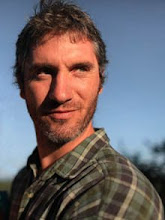They are named Jinn and they often come out at night. They like remote mountain valleys too. My first "encounter" with them was in Kachura village, in Pakistan's Karakoram mountains, during a full moon night.
Here is a two-part edited short story about Jinn's (and epilepsy...) in Afghanistan's Wakhan region by my friend and Afghan Kyrgyz expert © Ted Callahan:
"One night, as I’m writing up the day’s fieldnotes, Orunbai, a son of the Khan, comes to my tent.
“Sorry to bother you, Temir-aka, but my wife is sick. It might be a jinn, but we’re not sure.”
I’ve been wondering about traditional healing practices among the Afghan Kyrgyz, since I have yet to see any evidence of it, and eagerly follow Orunbai to his house. Inside, I find Kyrgol, his wife, keeled over, complaining of severe abdominal pain and moaning as she grasps her stomach.
...They decide that... they will try to drive the jinn out themselves. First, one of the women brings over a loaf of round, flat bread with two candles lit in the middle of it. This is passed in front of the sick woman three times, while chants are muttered. Then, this same woman brings over some embers from the fire and, putting them in front of Kyrgol, fans the smoke towards her. Finally, one of the men takes a rock which has been sitting atop the stove, wrapped it in a red cloth, and moves it back in forth in front of Kyrgol’s stomach, though without actually touching her.
Curious, I feign ignorance and ask why they are doing this. I am simply told, “For the jinn.”
When my turn comes, I give her some painkillers and antacids. The next day, Kyrgol is fine. Opinion is split over whether it really was a jinn or just, as I suggest, indigestion. We agree to let the question of what the problem might have been rest."
______
"One Wakhi shepherd at the Khan’s camp, Mirza, suffers from epilepsy, a common condition in the Wakhan owing to close intermarriage. Often, around dinnertime, he would rise, walk over to a corner, lie down, and suffer an epileptic seizure. I assumed that everyone knew he had epilepsy and that he simply endured his condition because no medicine was available.
One day, I asked Mirza whether he had sought treatment for his condition.
“Yes, I have visited several bakshy ( - ed: in Kyrgyz community, Bakshy are male shaman with healing powers) in the Wakhan but they have not been able to help me.” he answered.
Surprised, I asked, “Wait, what do you think your problem is?”
“I have a jinn” he replied, as if it were obvious. "
Text ©Ted Callahan




























